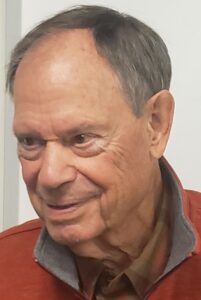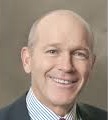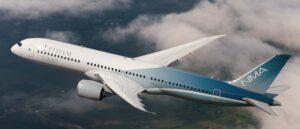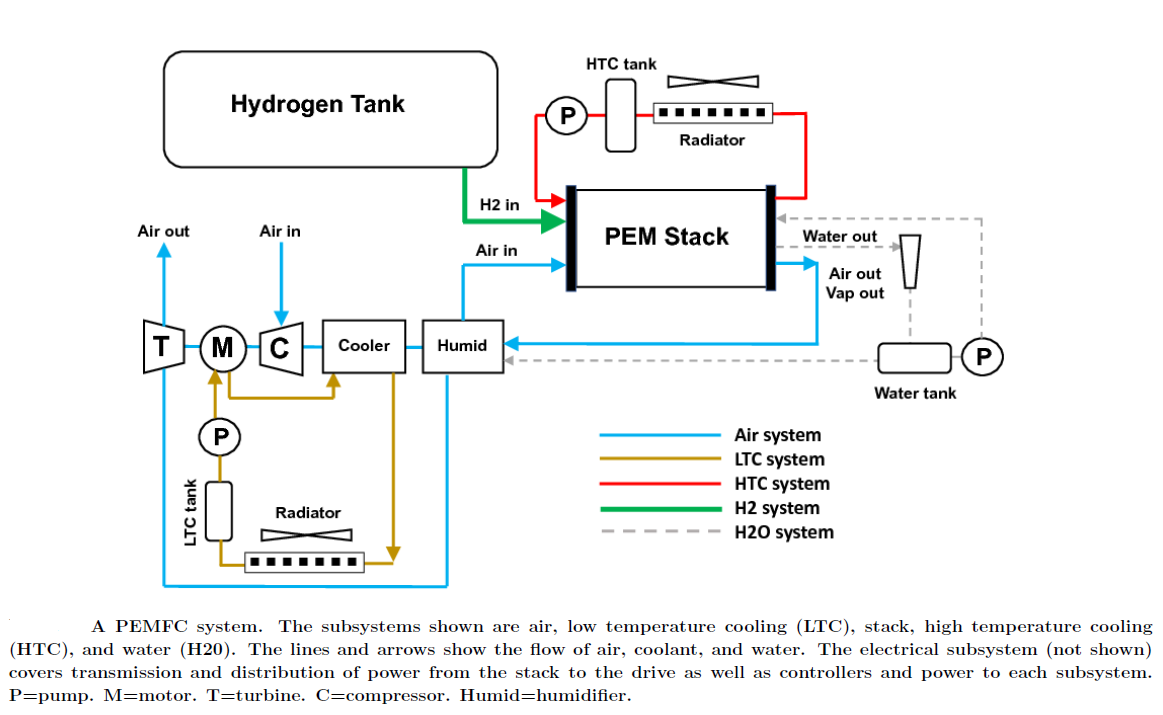Leeham News and Analysis
There's more to real news than a news release.
NASA, Boeing Say SAF Creates Fewer Greenhouse Contrails
By Dan Catchpole
Subscription Required
Nov. 2, 2023 © Leeham News: High over Montana, Andy “Jeeves” Barry slipped the McDonnell Douglas DC-8 to the right and out of the Boeing 737-10’s wake to “get some fresh air.”

NASA’s uses a highly-modified McDonnell Douglas DC-8 as a test platform for its Armstrong Flight Research Center. (Photo by Dan Catchpole)
After a few minutes, the NASA research pilot edged the DC-8 behind the MAX, trailing about a mile and a half or so. It was another in a slew of test flights in October that he’d spent riding the 737’s bumper in NASA’s venerable DC-8 research aircraft.
The former U.S. Navy aviator eased the workhorse into a slot of calmer air in the 737’s wake, he said. “…[I]n that sweet spot of that secondary (wake) and just above the primary wake is where we lived the whole time and got the best science that they really loved the entire time we were out there.”
NASA and Boeing collaborated on the flights to test the effect of sustainable aviation fuels (SAF) on the formation of contrails, short for condensation trails, which climatologists contribute to global warming. The 737-10 alternated between burning jet fuel and 100% SAF, while the DC-8 sampled the air in its wake.
Summary
- Researchers say data collected will help predict when and how contrails form and SAF’s effects on contrails.
- How much contrails contribute to global warming is not completely clear.
- Boeing is working with supply chain to develop airplanes that can fly 100% SAF and traditional jet fuel by 2030.
Universal Hydrogen’s first flight nears
- Universal Hydrogen nears first flight of containerized fueling concept.
- Eviation’s Alice all-electric airplane offers another option for clean skies.
Subscription Required
By Scott Hamilton
Feb. 27, 2023, © Leeham News: Universal Hydrogen (UH2) is just days away from the first flight of its hydrogen tank concept in a converted De Havilland Canada Dash 8-300.
The flight will be from the Grant County International Airport at Moses Lake in Central Washington State. As such, weather—which is often unpredictable here—could upset plans. So far, the forecast is favorable if cold.
UH2’s conversion removes seats from the aft portion of the passenger cabin to make way for two large tanks to install through a main deck cargo-size door cut into the fuselage. A similar approach is underway in France with an ATR-72.
The liquid hydrogen (LH2) containers are trucked from the refueling source and loaded onto the planes. Then, when near empty, these are swapped for refueling with other tanks filled with hydrogen for the next flight.

Universal Hydrogen’s concept for an H2-powered airplane centers on two fuel tanks at the aft end of the passenger cabin. This example is the ATR-72. A De Havilland Dash 8-300 is also being converted. Credit: Universal Hydrogen.
This concept solves the hydrogen supply problem at any airport. The ATR-72 capacity goes from 72 passengers to 56, a reduction of 28%. This dramatic reduction in revenue seats calls for a reset of cost and revenue per available seat mile, but for a first entry into the hydrogen field, it’s an important step in the quest for clean aviation. LNA believes that UH2 has the most viable hydrogen concept of all at the moment because the company addresses the hydrogen supply problem without the billions of dollars needed for airport infrastructure and pipelines.
Related stories
Moses Lake is the same airport used by Eviation for the first flight last year of its Alice electric aircraft. Its CEO, Gregory Davis, outlined the Alice concept at this month’s annual conference of the Pacific Northwest Aerospace Alliance (PNAA).
Pontifications: “What can be. What should be.”
Jan. 17, 2023, © Leeham News: “What can be. What should be.”
This was the title of an address last week at the University of Washington’s aerospace department. The speaker: the former CEO of The Boeing Co., Phil Condit.
Condit was named president of Boeing in 1992 and CEO in 1996. He retired in 2004 after a lifetime career at Boeing, with leadership roles in the 747, 757, 757, 767, and 777 programs.
With ecoAviation the soup de jour these days, beneficiaries of billions of dollars of investment (much of it stupid money) and the subject of much greenwashing, Condit had frank and candid observations about these concepts.
Although Condit retired from Boeing in the wake of the USAF tanker procurement scandal dating to 2001, his engineering skills and fundamental visions were highly regarded. He put these skills to good use a week ago.
Boeing needs “real honest-to-God product development:” ex-CEO
By Scott Hamilton
Jan. 10, 2023, © Leeham News: An ex-chief executive officer of The Boeing Co. said Jan. 9 that the company needs to undertake “real honest-to-God” product development, or it will lose the skills required to do so.
Phil Condit, the CEO was named president of Boeing in 1992 and CEO in 1996. He retired in 2004 after a lifetime career at Boeing, with leadership roles in the 747, 757, 757, 767, and 777 programs. Speaking at the University of Washington aerospace school, Condit was asked about Boeing’s product development.
“I’ve got to be really careful,” Condit replied, choosing his words carefully. “I’ve been retired for almost two decades. I think there are some things that I have heard and observed that I agree with, like SAF as a place to go, is one of those. I think it’s important for Boeing to do some real honest-to-God important development because over time you lose skill. If you don’t do things, you lose your capability to do them. It’s important that skills get exercised.”
SAF is Sustainable Aviation Fuel. Boeing currently is placing its major bets in ecoAviation on SAF rather than hydrogen or battery-powered aircraft, although research and development of the latter two areas continue. Current CEO David Calhoun previously announced Boeing’s commercial airliners will be 100% SAF-capable by 2030. Airbus will, too, but it’s pursuing hydrogen as a major solution to some of aviation’s need to go “green.”
Regulators need to understand realities, complexities of achieving ecoAviation goals
Subscription Required
Now open to all readers.
By Scott Hamilton
Dec. 5, 2022, © Leeham News: Battery power. Hybrid-battery. Hydrogen. Hydrogen-hybrid. Sustainable Aviation Fuel.
Whatever the path chosen by the hundreds of companies seeking greener commercial aviation, government regulations and tax breaks are going to be a part of the solutions.
The airline industry has a goal of achieving net-zero carbon emissions by 2050. There are milestone targets between now and then. But will governments fully understand what’s technologically achievable in considering regulations or tax breaks? Will they fully understand which options are the best environmental solution?
Boeing developed an analytical tool called Cascade to help governments and regulators understand these issues. Importantly, Cascade takes into account the total life cycle factors for environmentally-friendly options.
The model analyzes carbon emissions for airplane fleet renewal, renewable energy sources such as sustainable fuel, hydrogen, electric propulsion, operational efficiency improvements, and advanced technologies. At the moment, Cascade remains in Beta testing internally. LNA has not had the opportunity to play with it.
Related Articles:
“We’ve got to be honest about where we are on the life cycle emissions,” says Chris Raymond, the chief sustainability officer for The Boeing Co. “We’ve got to have a way to take that into account. We were just trying to start to illustrate to people that the energy generation upstream of whatever’s going to power the airplane is all part of the calculus that we have to think about. That’s really why we invented Cascade.”
“The music will stop” because aviation will miss target “green” deadlines: Boeing’s Calhoun
Subscription Required
By Scott Hamilton
Oct. 24, 2022, © Leeham News: Boeing CEO David Calhoun believes that the plethora of concepts for shifting to “green” aviation may be confusing policymakers.
And, he says, the pace outlined by the commercial aviation industry may contribute to the confusion.
Calhoun also said that Sustainable Aviation Fuel (SAF), while the most promising near-term technology to reduce aviation emissions, isn’t an easy solution, nor is it a complete solution.
Calhoun made his remarks last month at the US Chamber of Commerce Aerospace Summit in Washington (DC).
Voltaero’s Cassio hybrid plane is “Mild”
The somewhat different hybrid-electric aircraft
Subscription Required
By Scott Hamilton and Bjorn Fehrm
Oct. 10, 2022, © Leeham News: A French company, Voltaero, is taking a different approach to the plethora of concepts to produce a “green” aerial vehicle.
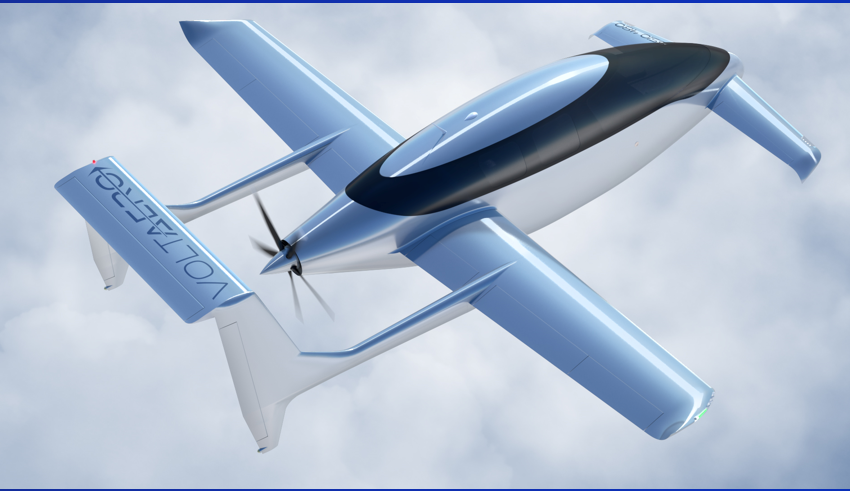 The Cassio family of aircraft uses a Mild Hybrid to avoid the pitfall of most hybrids, the need for a large battery. Batteries of today and tomorrow are too heavy to serve as the main power source for an aircraft unless it’s a flight around the airport like for trainers.
The Cassio family of aircraft uses a Mild Hybrid to avoid the pitfall of most hybrids, the need for a large battery. Batteries of today and tomorrow are too heavy to serve as the main power source for an aircraft unless it’s a flight around the airport like for trainers.
Voltaero designed a clever hybrid scheme that allows electric flight where it matters and leaves a thermal engine to do the rest. The concept, called a “Mild Hybrid,” keeps the advantages of the electric flight mode without the disadvantages of short-range or an expensive operation.
UPDATED: All-electric Eviation Alice takes 1st flight
Sept. 27, 2022 © Leeham News: The battery-powered Eviation Alice has flown for the first time.
The nine-seat aircraft, powered by twin electric propeller motors assembled by Eviation’s sister company, magniX, rotated up and took off into a sky hazy from forest fires shortly after sunrise in the Pacific Time Zone, a little after 7 a.m.
After takeoff the plane banked to the right, circled for eight minutes around Grant County International Airport in Moses Lake, then landed safely. The Alice reached an altitude of 3,500 feet.
The dawn flight was an important milestone for Eviation, magniX, and for battery-powered aircraft in general. The Alice appears to be the largest electric passenger aircraft to fly so far, larger than the two-seater Pipistrel Velis, which had its first test flight with passengers in Iceland last month. Tecnam and Rolls Royce teamed up to fly a four-seater P2010 with a hybrid electric engine in February.
Summary
- EIS is still years away, CEO says
- Eviation and magniX need batteries to get better
- Alice will evolve in interim
Bjorn’s Corner: Sustainable Air Transport. Part 21. Fuel Cell system design
May 27, 2022, ©. Leeham News: Last week, we looked at the power levels we need in a fuel cell and electric motor system. We listed the required powers and durations for takeoff, climb, and maximum continuous power levels for a 70-seater turboprop.
Now we go deeper into the fuel cell system design, looking at system powers and thermals.



